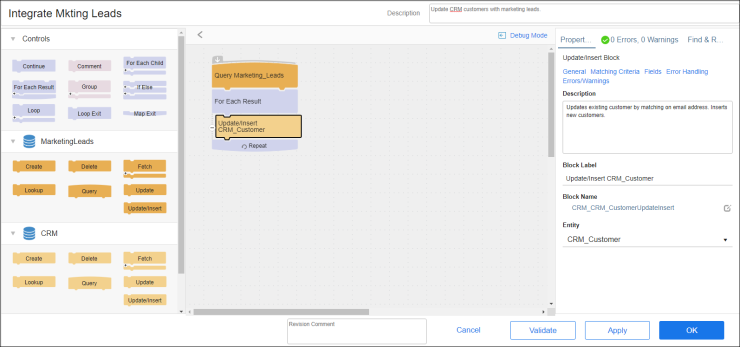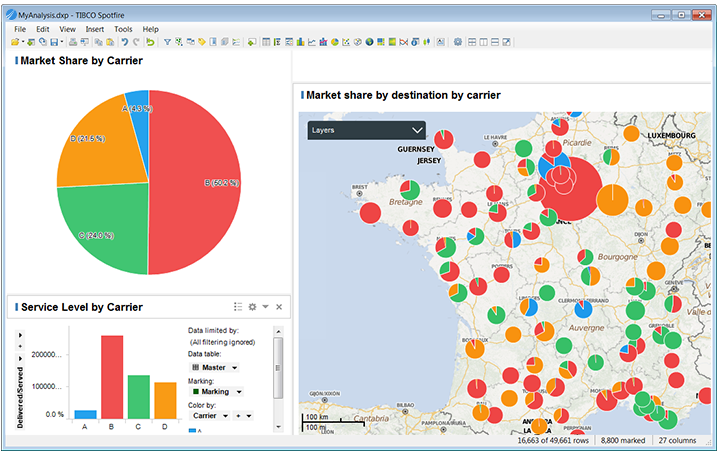
TIBCO Platform Integration provides a robust solution for integrating enterprise data and applications. It connects heterogeneous systems—both on-premises and in the cloud—enabling real-time synchronization, information transformation, and business flow orchestration through pre-configured connectors and low- or no-code tools.
Features of TIBCO Platform Integration
The platform incorporates a wide range of features that facilitate integration in complex business environments:
-
Multiple Connectivity: Links ERP systems, CRM, databases, SaaS applications, and legacy technologies through over 200 pre-defined connectors. This ensures seamless information flow between different technological silos.
-
Visual Flow Design: Its graphical interface supports the development of integration processes using low-code/no-code tools. Users can model, configure, and deploy integration flows intuitively, reducing reliance on manual development.
-
Advanced Data Transformation: Includes functions for validating, transforming, and enriching data in real-time. This is essential for adapting formats and protocols to the needs of each connected system.
-
Orchestration and Automation: Facilitates the coordination of complex processes by scheduling tasks, managing message flows, and monitoring execution through centralized dashboards and log analysis tools.
-
Flexible Deployment: Supports implementations in public clouds, private clouds, or hybrid environments, enabling organizations to meet data residency requirements and security policies.
-
API and Microservices Integration: Offers the ability to expose, consume, and manage APIs, enhancing interoperability and promoting service-oriented architectures.
TIBCO Platform Integration provides a workspace that centralizes the management of complex integrations without requiring excessively customized development. Its modular architecture enables rapid connectivity between disparate systems, facilitating real-time data access to support strategic decisions.
The platform deploys a set of tools designed to facilitate automation and orchestration of processes through an intuitive visual design. With its transformation and information routing options, the solution connects on-premises applications and cloud services, simplifying operations in heterogeneous and dynamic environments. It also incorporates monitoring and analysis mechanisms that optimize the administration of the technological ecosystem.
The integration engine is robust in handling high volumes of messages and data, adapting to various enterprise architectures. Its transformation and validation functions ensure an agile and reliable information flow, facilitating interoperability and compliance with regulations in controlled environments.
Strengths and Weaknesses of TIBCO Platform
| Strengths | Weaknesses |
|---|---|
| High scalability and proven performance in complex environments. | Steep learning curve for new users and teams without prior experience. |
| Extensive connectivity through over 200 pre-configured connectors, facilitating the integration of numerous enterprise applications. | Complex initial configuration may require investment in training and specialized consulting. |
| Powerful orchestration and automation of processes, enabling optimal management of real-time data flows. | High cost compared to other market alternatives, especially for large-scale implementations. |
| Flexibility to integrate into hybrid environments (cloud, on-premises, and edge), adapting to diverse architectures and security requirements. | Documentation may sometimes be insufficient for highly specific or customized scenarios. |
References
Official TIBCO Platform Integration Page: TIBCO Platform Integration
- Log in to post comments


 Jaspersoft is the reporting platform for Business Intelligence acquired by TIBCO to complete its portfolio of BI and enterprise analytics solutions.
Jaspersoft is the reporting platform for Business Intelligence acquired by TIBCO to complete its portfolio of BI and enterprise analytics solutions. 